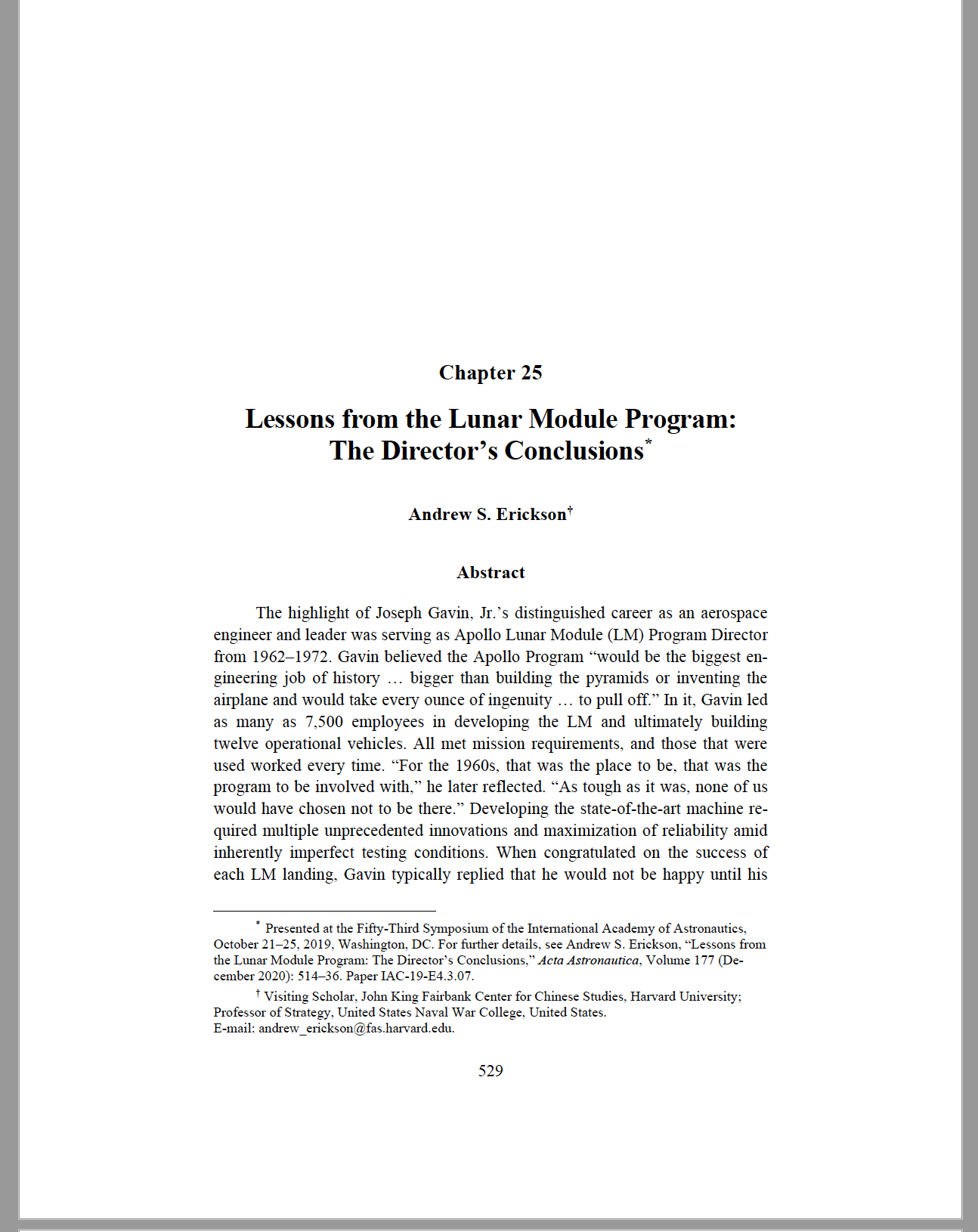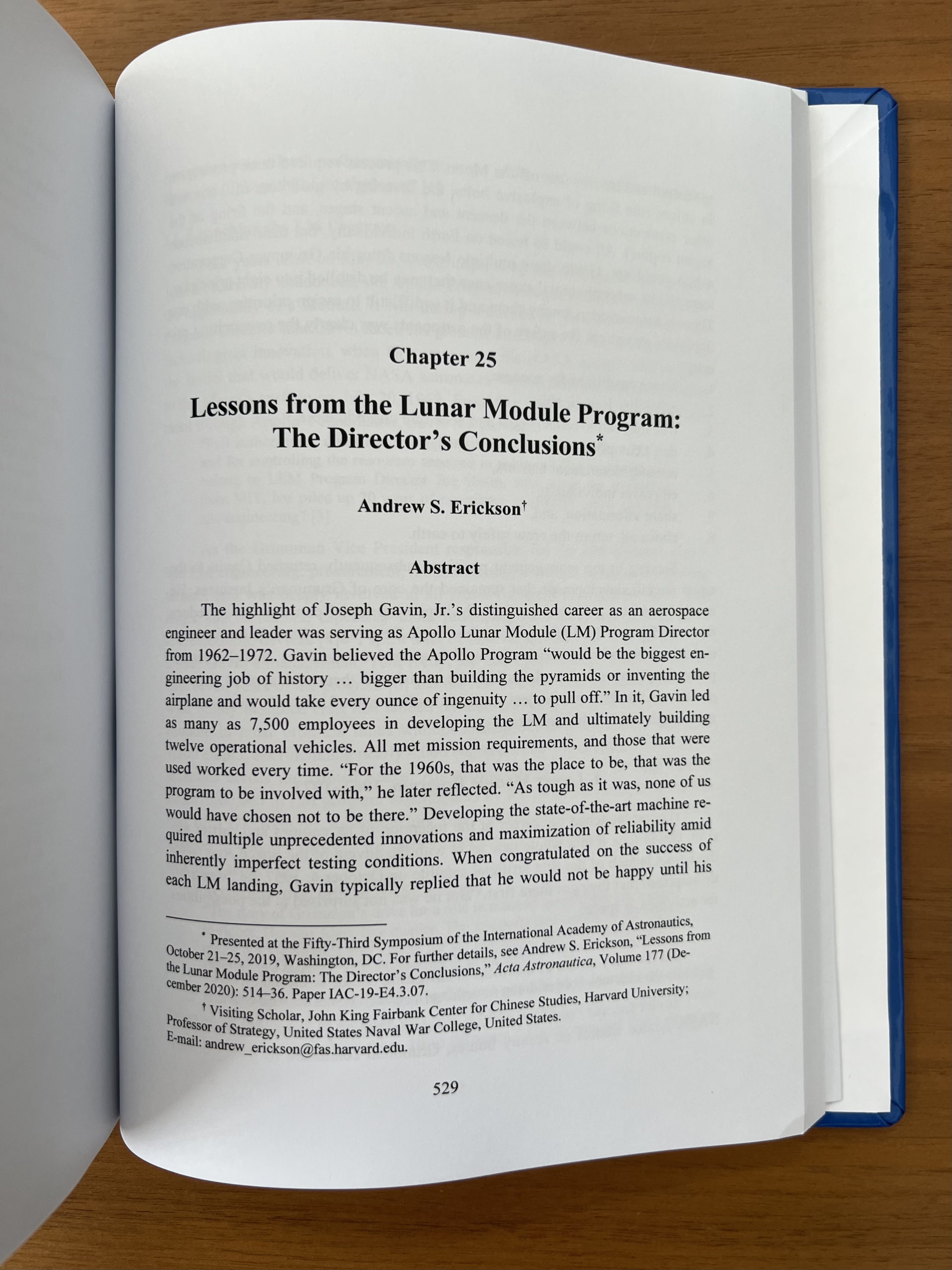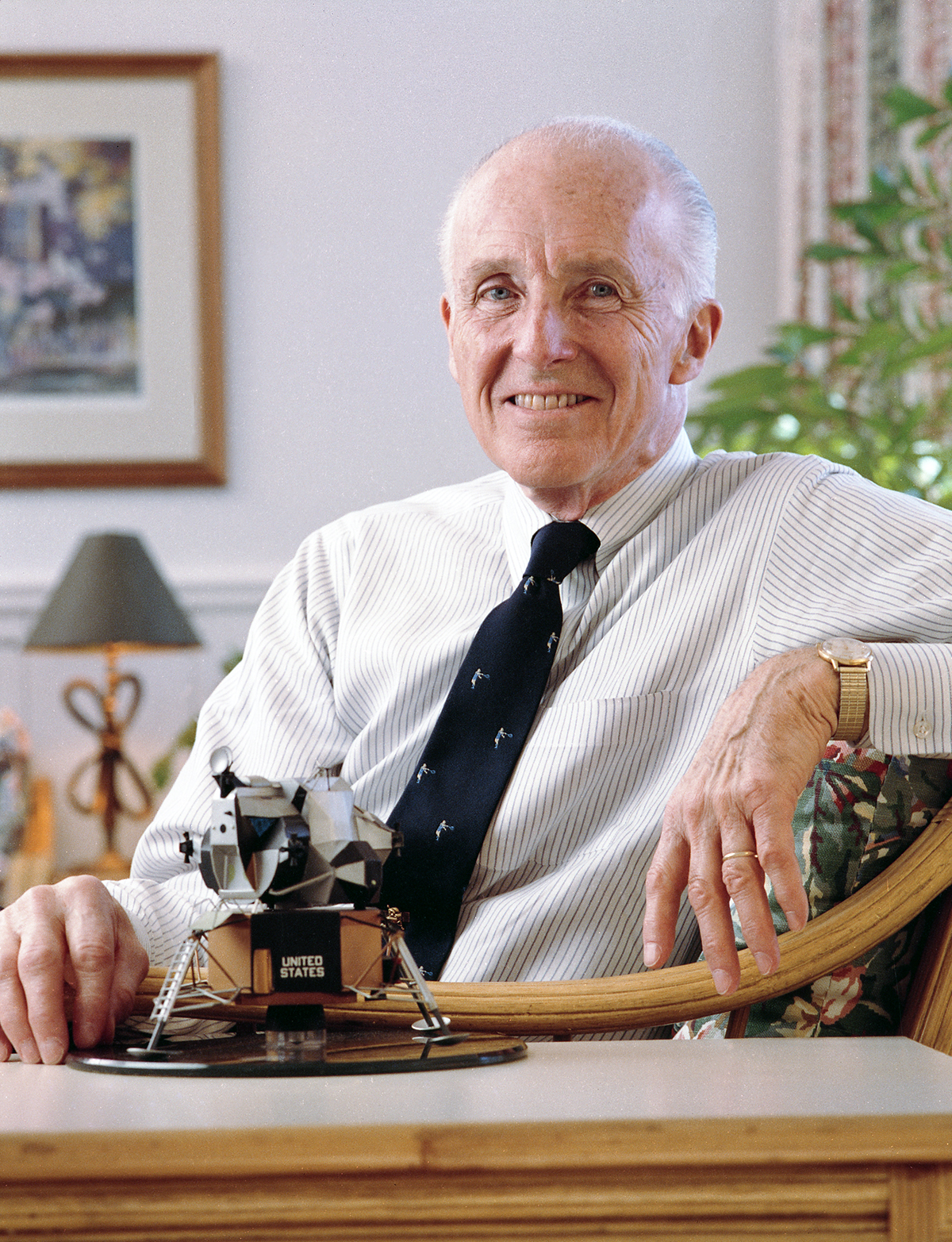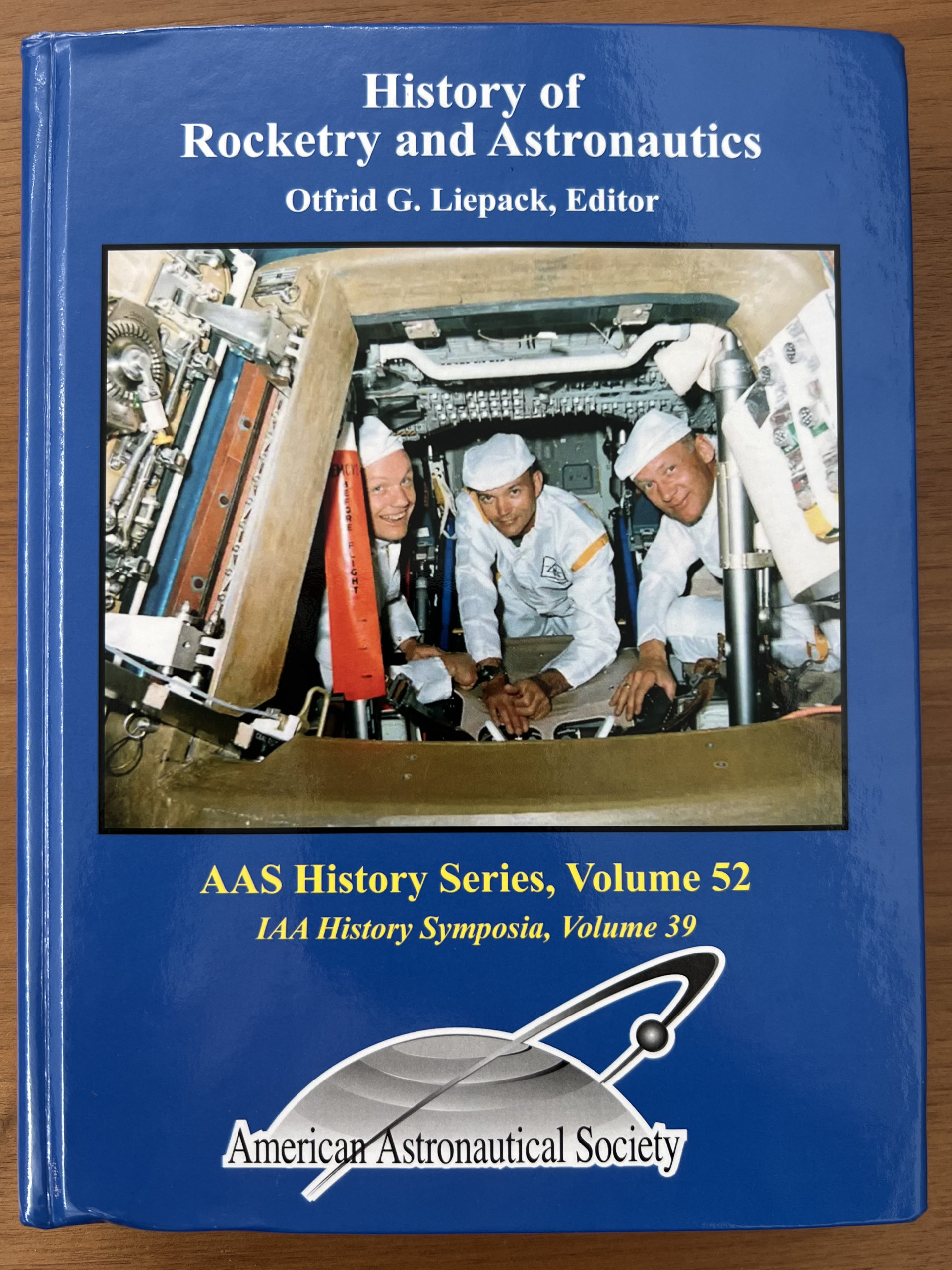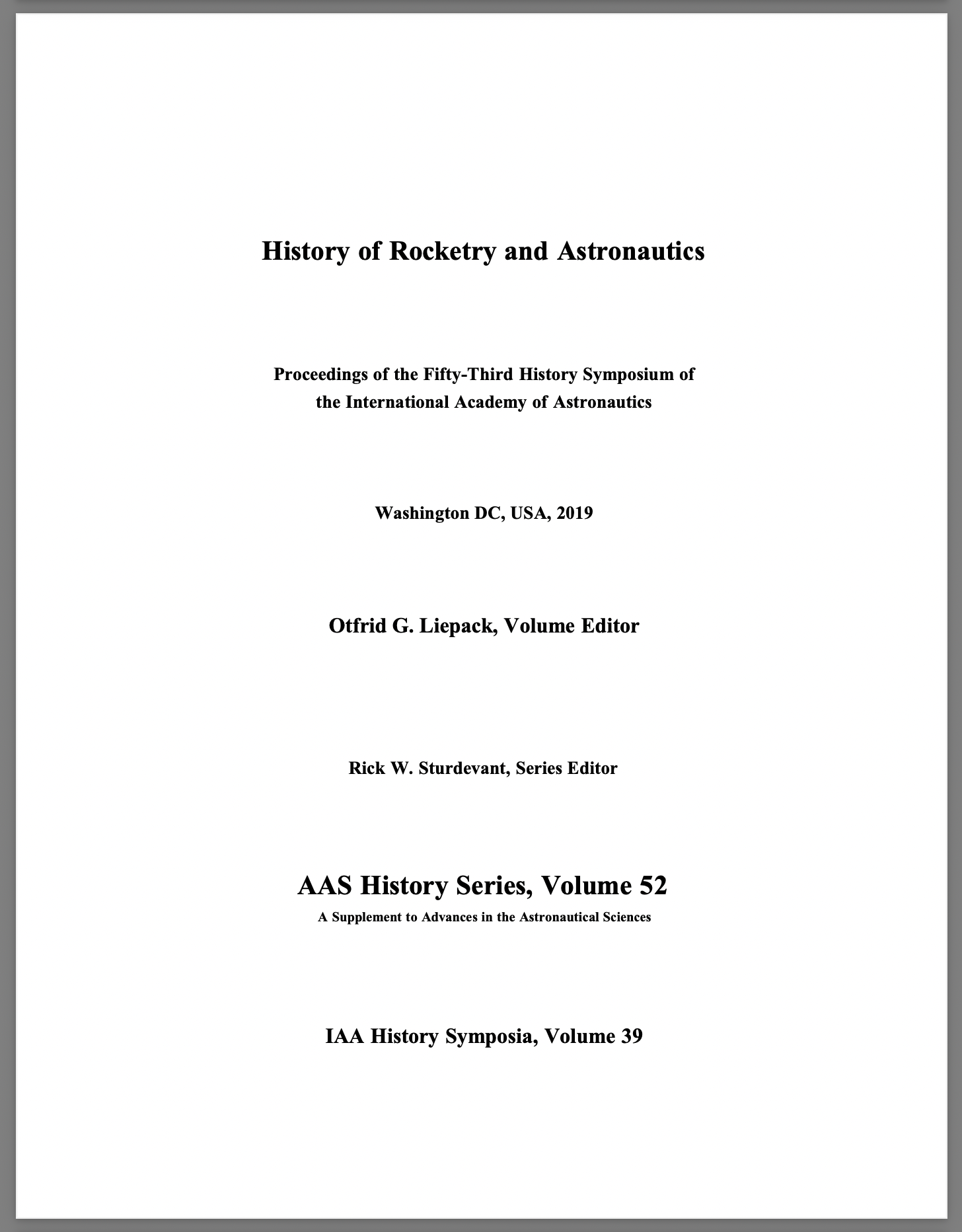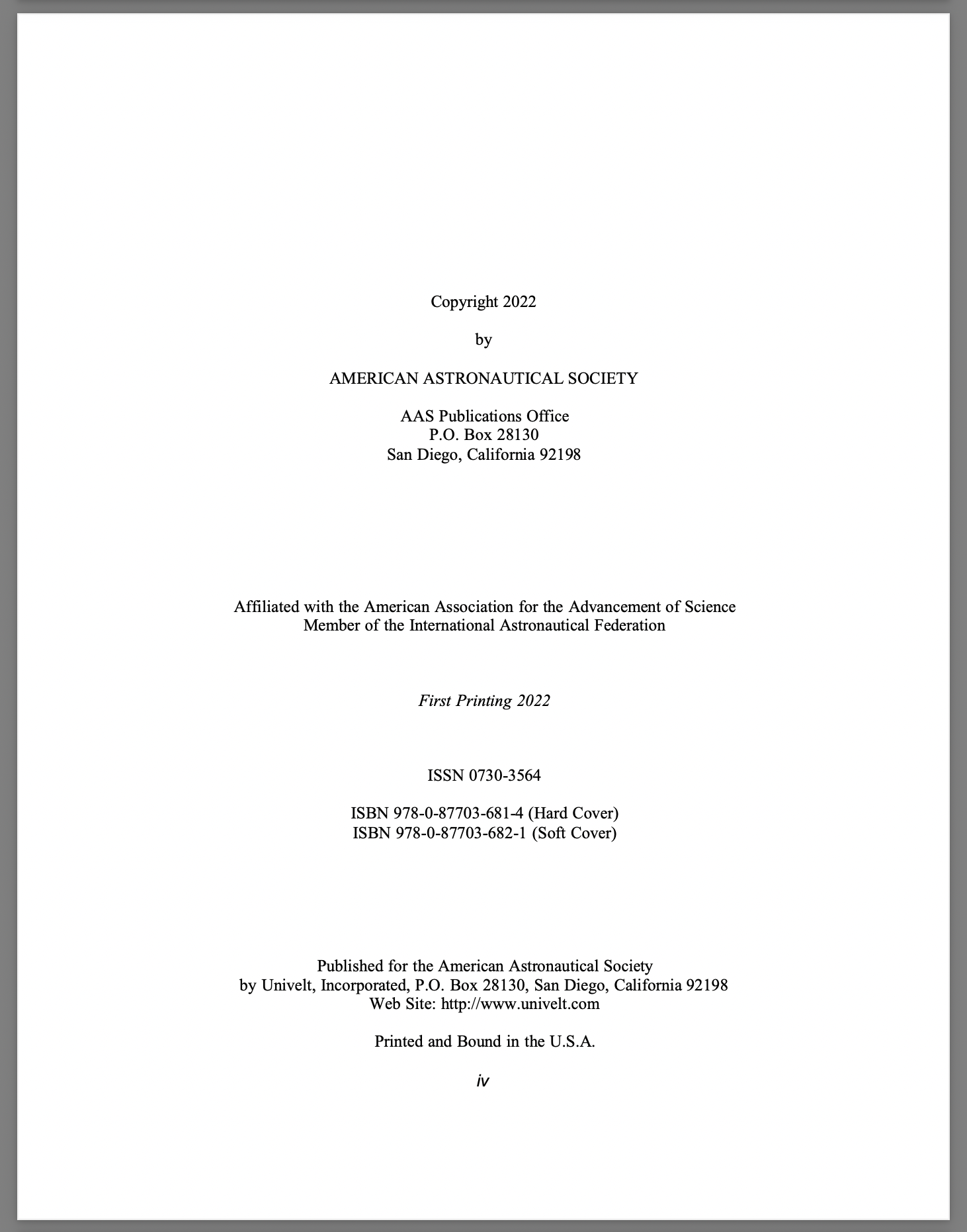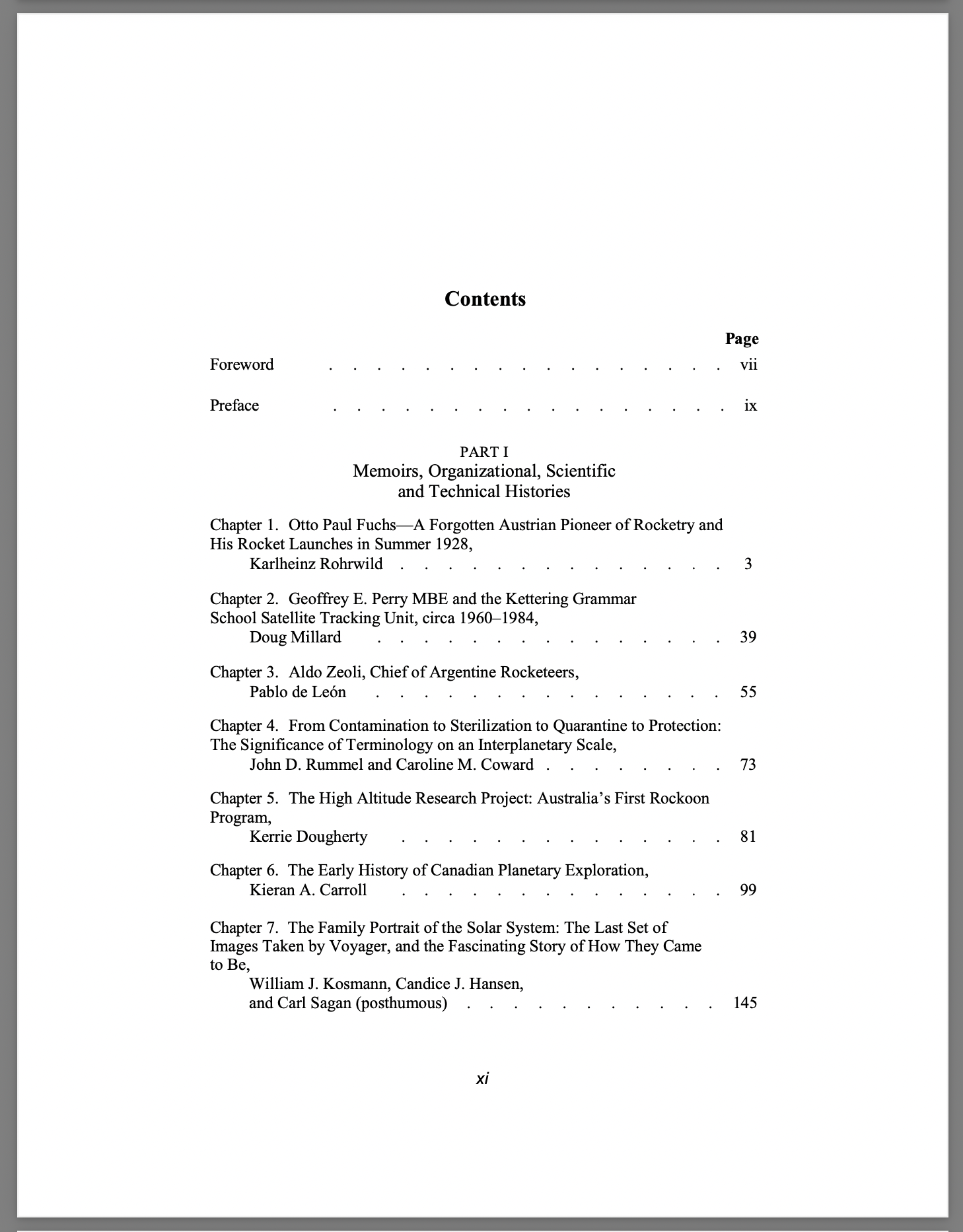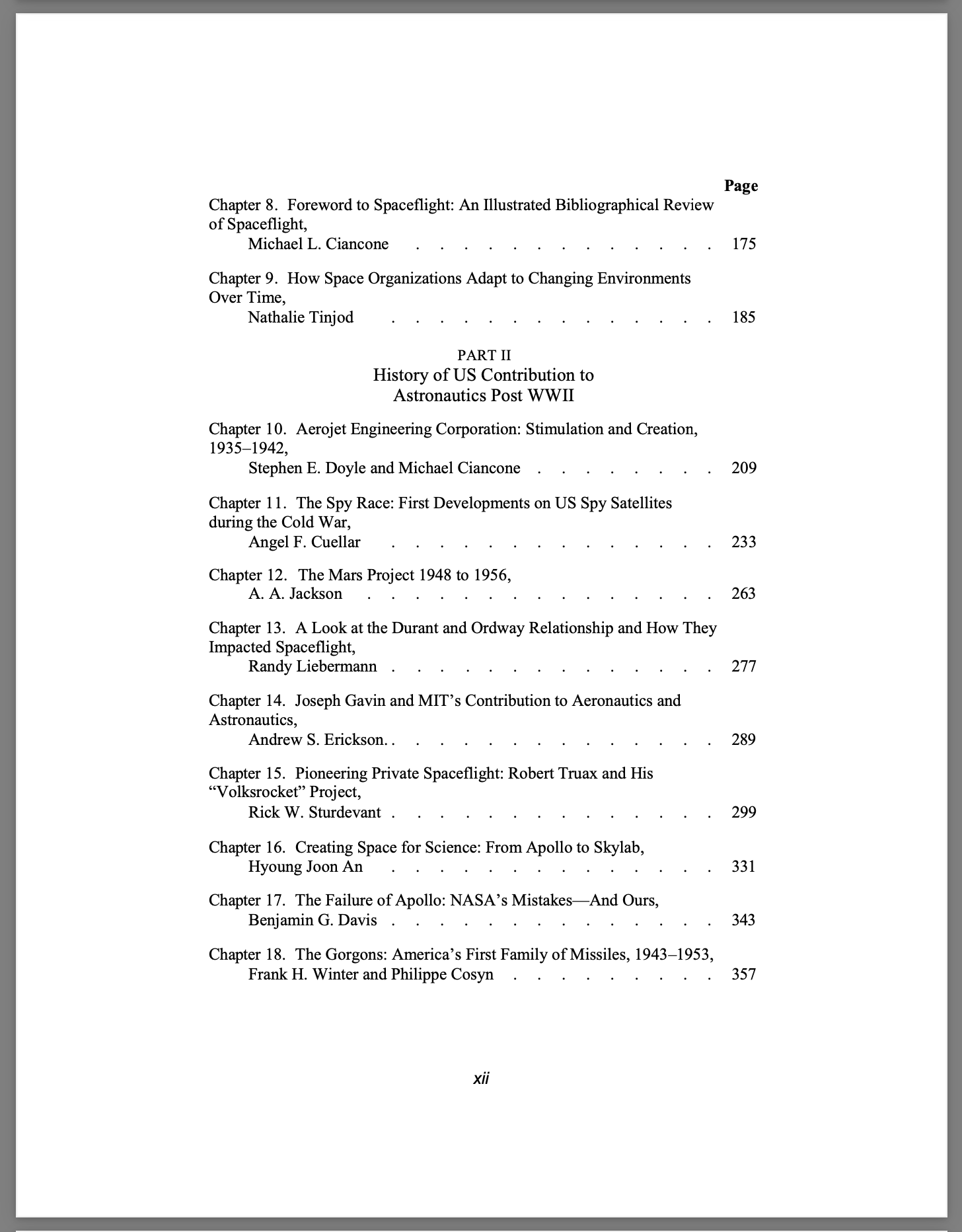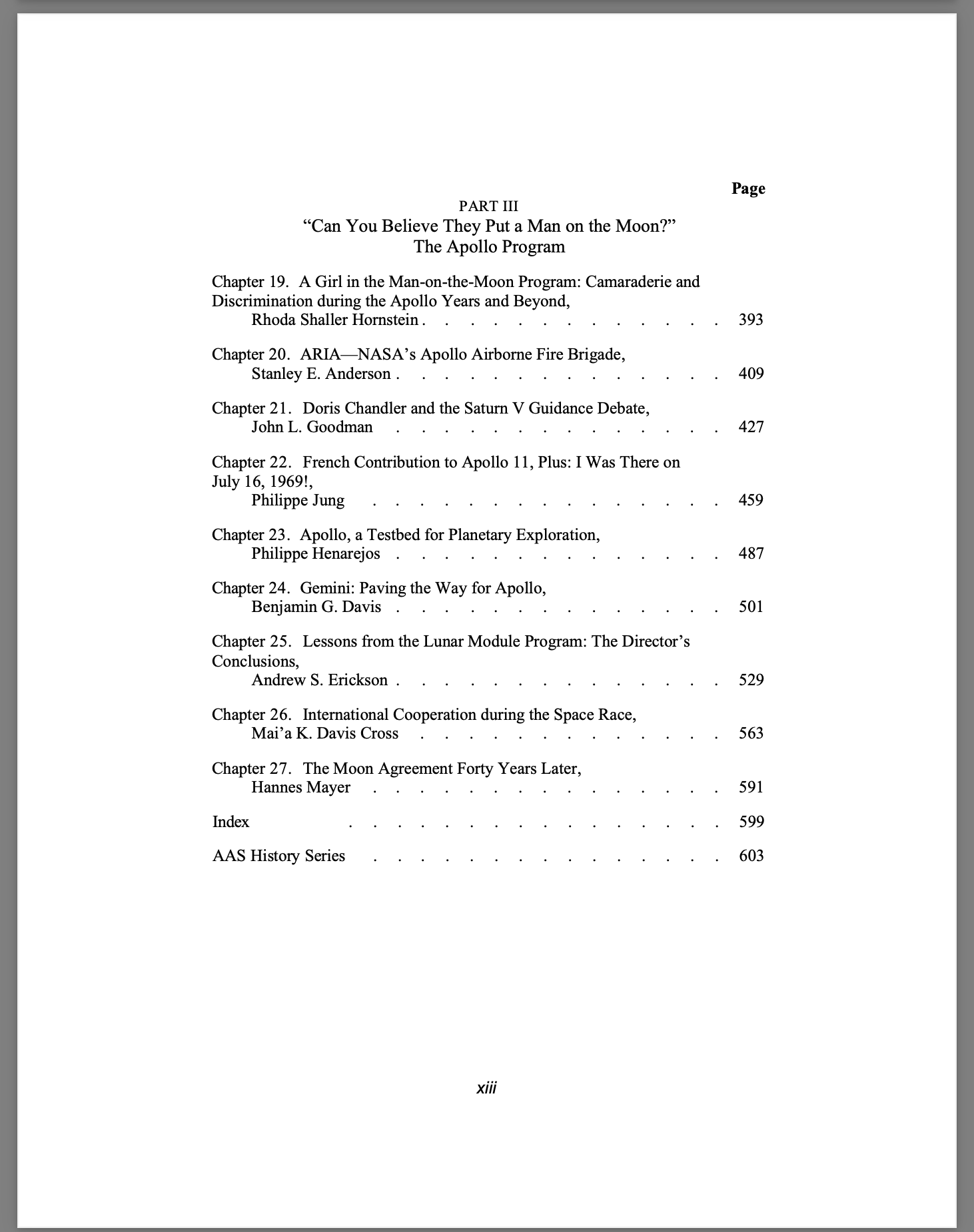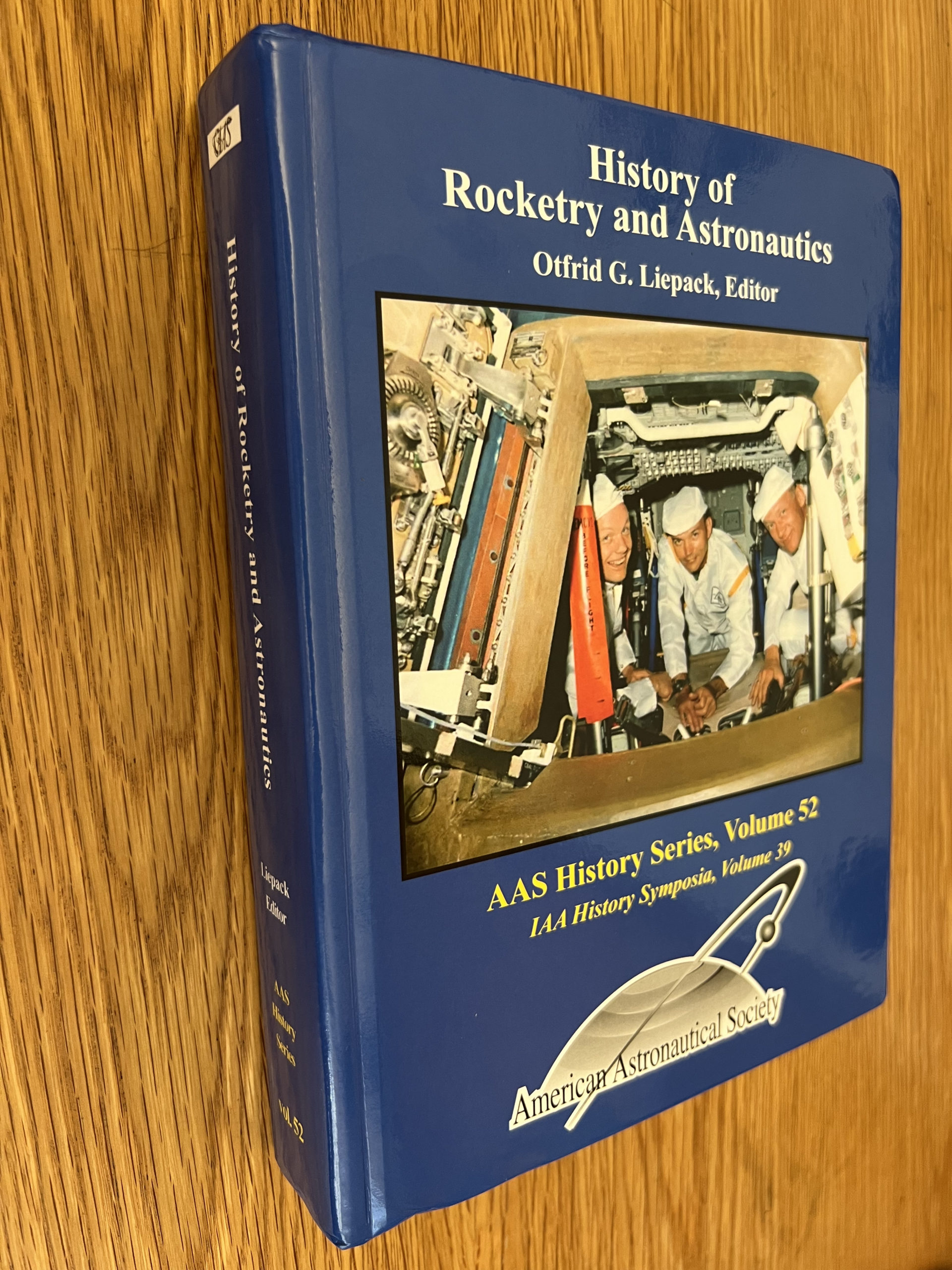Lessons from the Lunar Module Program: The Director’s Conclusions
Chapter 25
Lessons from the Lunar Module Program: The Director’s Conclusions*
Andrew S. Erickson†
* Presented at the Fifty-Third Symposium of the International Academy of Astronautics, October 21–25, 2019, Washington, DC. For further details, see Andrew S. Erickson, “Lessons from the Lunar Module Program: The Director’s Conclusions,” Acta Astronautica, Volume 177 (De-cember 2020): 514–36. Paper IAC-19-E4.3.07.
† Visiting Scholar, John King Fairbank Center for Chinese Studies, Harvard University; Professor of Strategy, United States Naval War College, United States. E-mail: andrew_erickson@fas.harvard.edu.
Abstract
The highlight of Joseph Gavin, Jr.’s distinguished career as an aerospace engineer and leader was serving as Apollo Lunar Module (LM) Program Director from 1962–1972. Gavin believed the Apollo Program “would be the biggest engineering job of history … bigger than building the pyramids or inventing the airplane and would take every ounce of ingenuity … to pull off.” In it, Gavin led as many as 7,500 employees in developing the LM and ultimately building twelve operational vehicles. All met mission requirements, and those that were used worked every time. “For the 1960s, that was the place to be, that was the program to be involved with,” he later reflected. “As tough as it was, none of us would have chosen not to be there.” Developing the state-of-the-art machine required multiple unprecedented innovations and maximization of reliability amid inherently imperfect testing conditions. When congratulated on the success of each LM landing, Gavin typically replied that he would not be happy until his spacecraft and its crew got off the Moon. This process required three procedures in unison (the firing of explosive bolts, the severing by guillotine of wires and other connections between the descent and ascent stages, and the firing of the ascent engine). All could be tested on Earth individually, but their simultaneous action could not. Gavin drew multiple lessons from his Grumman Corporation team and its subcontractors’ experience that may be distilled into eight principles. There is some overlap among them and it is difficult to assign priorities, with one important exception: the safety of the astronauts was clearly the overarching priority:
- create conditions for success,
- reliability is attainable,
- true innovation renders cost and schedule unpredictable,
- don’t complicate things unnecessarily,
- remove hierarchical barriers,
- empower individuals,
- share information, and,
- above all, return the crew safely to earth.
Serving in top management positions subsequently returned Gavin to the naval aircraft development that remained the core of Grumman’s business. He applied LM best practices, particularly improving initial construction to reduce the need for tests (per principle number two). Drawing on Gavin’s original calendars, notes, and presentations, as well as extensive interviews, this chapter explores his lessons and explains how he envisioned them and applied them in practice as an aerospace project engineer leading one of history’s greatest aerospace engineering achievements.
I. Lunar Module Program, 1962–1972
Having launched his career at the inception of jet engines and carrier aircraft, Gavin took it to whole new level with the advent of the Space Age. With the Soviet launch of the first artificial satellite on October 4, 1957, he “was a little surprised that they got there first.” But he was not surprised at the possibilities for activities in space:
“At the end of my tour in the Navy, we wrote a report at the request of Senator Truman about where the Navy should go in the future. We suggested that the Navy should be interested in navigating outside of the atmosphere. So the idea took hold of doing something [in space]. It was not a new idea.”
Soviet success “stimulated a lot of interest, [which] extended nationwide.” NASA funded studies on reentry bodies; Grumman conducted its own: “orbital navigation was related mathematically to some of the work we had done on [the optimum flight path] of jet airplanes” [1].
I.1. Launching the LM Program
Four years later, on May 25, 1961, inspired by the bold initiative President John F. Kennedy announced, the Apollo Program brought Grumman, and Gavin, the opportunity of a lifetime. It was during a decade as Vice President and LM Program Director that Gavin faced his greatest challenges in the management of technological innovation, when Grumman won the NASA competition to build the lander that would deliver NASA astronauts Neil Armstrong and Buzz Aldrin to the Moon’s surface on July 20, 1969. From Grumman’s very first announcement through Apollo’s conclusion, Gavin led the team:
“Full authority for directing Grumman personnel assigned to the LEM [2] and for controlling the resources required to achieve LEM objectives will belong to LEM Program Director Joe Gavin, who, since his graduation from MIT, has piled up 20 years of experience in aircraft, space, and missile engineering” [3].
As the Grumman Vice President responsible for the LM contract, Gavin had LM engineering, procurement, manufacturing, and field operations reporting to him, and was deeply involved in all areas. He spent considerable time with major subcontractors, especially those producing the rocket engines and radio and electronic devices [4]: “I spent a lot of time on the road [and] in the air” [5]. Under Gavin’s management, Tom Kelly, the LM Chief Design Engineer for the first seven years of the program [6] and the rest of the Grumman team succeeded with boldly designed craft that landed on the Moon and rejoined the Command Module in lunar orbit six times without mishap. At its peak, Gavin managed 7,500 employees (including nearly 4,000 engineers and 400 draftsmen) in several locations across the United States. Approximately 55 percent of what totaled $2,287,600,000 in LM program expenditures by the program’s conclusion at the end of 1972 went to subcontractors that Grumman oversaw [7]. The buck stopped in Gavin’s office: “we were responsible for putting it all together and making it work” [8].
According to an official NASA history,
“The story of Grumman’s drive for a role in manned space flight has a rags-to-riches, Horatio Alger-like quality. The company had competed for every major NASA contract and, except for the unmanned Orbiting Astronomical Observatory satellite, had never finished in the money” [9].
But the upstart enterprise was nothing if not determined. “The interesting thing about Grumman at the time was that we had a core of people who had been with the company anywhere from 10 to 20 years,” Gavin recalled three decades later. “These were the core of the activity, and I can’t say enough for the confidence that was there” [10]. Beginning in 1961, Gavin led Grumman’s self-funded study by its Space Group of a novel Moon-landing technique refined and championed by NASA Langley Research Center engineer John Houbolt, [11] lunar-orbit rendezvous (LOR) [12]. “We were convinced that LOR was the way to do it,” Gavin explains [13].
On May 15, 1961, ten days before Kennedy’s announcement, Gavin’s group submitted their summary report to NASA [14]. Under his leadership, Grumman recruited subcontractors, starting with Honeywell and Space Technology Laboratories [15]. NASA requested Apollo spacecraft proposals in July. Gavin and his colleagues hoped to bid as a prime contractor, which Gavin believed to be technically feasible. “I’m an eternal optimist, so I think we could do it, but I don’t have the whole company to worry about,” he stated [16]. They were prevented by Grumman’s management from betting the firm on such an ambitious and risky endeavor, however [17]. Instead, Grumman bid as a contractor for GE, learning much but encountering differences in corporate culture [18]. On November 28, NASA selected North American Aviation as the Apollo spacecraft contractor, precluding such a path [19].
Seizing their final chance to join Apollo, in early December 1961 Gavin and his team made a pitch directly to Robert Gilruth, founding director of NASA’s Manned Spacecraft Center in Houston [20], and his colleagues. Their vision for a lunar lander coincided strikingly with NASA’s own internal estimates, including regarding the weight of such a vehicle [21].
Heading Grumman’s fifty-man, one-year study of LOR and the LM, Gavin instructed Kelly to “prepare a study plan and budget request for [1962], aimed at positioning [Grumman] as a prime contractor on the LM” [22]. They lost NASA’s January 1962 study competition to General Dynamics/Convair but persisted on Grumman funds anyway. They submitted their report in June and briefed it to Deputy Director of NASA’s Office of Manned Space Flight Joseph Shea. From November 1961 through June 1962, NASA debated whether to select Wernher von Braun’s preferred approach of Earth-orbit rendezvous, or the “dark horse” approach of LOR [23]. LOR finally prevailed with von Braun’s endorsement, triggering a bidding competition that fall. Gavin’s team submitted their bid two hours before the deadline and dropped everything for a “fire drill” to answer follow-up questions from NASA’s Source Evaluation Board in less than forty-eight hours. Unusually, proposals had involved addressing a set of twenty questions, to be answered in 100 pages using standard margins and type [24]. “To answer the questions, we had to postulate a design,” Gavin later recalled [25]. But “NASA hadn’t really bought [our] design. They thought they’d bought an engineering service” [26]. “We had just passed the entrance examination, and we would have to work with [NASA’s] Johnson Space Center to develop a design” [27]. Grumman won officially on November 7, 1962 [28].
In mid-November, Gavin’s team began marathon negotiations with NASA. From a Houston motel whose interior remained unfinished, they worked straight through Thanksgiving and only barely made it home for Christmas, with Gavin and a colleague the last to leave. On January 14, 1963, Gavin and Gilruth re-solved remaining issues at Grumman headquarters (on Long Island, in Bethpage, New York), yielding a verbal go ahead from NASA. A formal $387.9 million contract followed in mid-March [29] for an initial production run of six LMs [30]. Gavin now faced the challenge of heading “the last major portion of the Apollo program to be defined and started” [31]. Kelly described his boss as “a natural leader, who, in the face of crises and confusion, remained calm and stead-fast of purpose, inspiring others to rally around him” [32]. He repeatedly credited Gavin’s “steadying influence” with enabling focus amid extraordinary pressure and occasional withering criticism from NASA over any possible errors [33]. … … …
Joseph G. Gavin, Jr. with a model of the Lunar Module. (Photo courtesy of Draper Archive.)
VOLUME INFORMATION:
This is the 39th volume (plus two index volumes) in the International Academy of Astronautics (IAA) History Series of the American Astronautical Society (AAS) History Series (volume 52) and the last published by Univelt. As such, it is the final volume of the 53 IAA History Symposia (1967–2019). Focusing on the 50th Anniversary of the Apollo 11 lunar landing ends this series on a high note!
Volume 52 of the AAS History Series
Proceedings of the 53rd History Symposium of the International Academy of Astronautics
Pub. 2022, 622pgs. Ed. Otfrid G. Liepack. Includes CD-ROM containing full text in pdf format
Hard Cover. 978-0-87703-681-4.
pp. vii–viii
History of Rocketry and Astronautics
AAS History Series, Volume 52 International Academy of Astronautics Symposia
Foreword
Like its predecessors, the Fifty-Third History Symposium of the International Academy of Astronautics, held in conjunction with the Seventieth International Astronautical Congress (IAC) in Washington, DC, during the third week of October 2019, followed the well-established pattern of including the presentation of papers on memoirs, organizational, scientific, and technical histories, plus others related to rocket and space-related activities in the annual meeting’s host nation—in this case, the United States. Given that 2019 marked the fiftieth anniversary of the first lunar landing, however, both IAC program planners and IAA History Committee members chose to give special emphasis to the significance of the Apollo 11 mission specifically and, in a broader sense, to the entire Apollo program.
That focus prompted me to recall one of those memorable moments when anyone then witnessing an event can tell you where and when they were. On Sunday July 20, 1969, at 6:56 P.M., for example, I—along with several dozen other Volunteers in Service to America (VISTA) about to depart for one-year assignments to villages across the state—was watching television in an Anchorage, Alaska, hotel lobby. Through this very first, satellite-delivered, live television broadcast in Alaska, we watched astronaut Neil Armstrong step from the Apollo 11 Lunar Module Eagle onto the Moon and say, “That’s one small step for [a] man, one giant leap for mankind.” All of us VISTA volunteers and others shouted for joy and clapped hands. I shall never forget that historical moment, but I am not sure any of us truly appreciated—let alone bothered to understand at the time—how much effort went into providing that live coverage to Alaskans.
The US Air Force had launched TACSAT 1, an experimental communications satellite developed by Hughes Aircraft Company, from Cape Canaveral on February 9, 1969. Controllers positioned the 1,600-pound satellite in a geosynchronous orbit over the Pacific Ocean. That satellite provided a crucial link between the US Army SATCOM Agency at Fort Monmouth, New Jersey, and a military satellite communications terminal located adjacent to broadcast pioneer Augie Hiebert’s television station KTVA channel 11, the CBS network television station in Anchorage. Television signals transmitted from the Apollo 11 astronauts on the lunar surface went from the NASA Space Center in Houston, Texas, to commercial television facilities and were “picked off the air” by the Army SATCOM Agency’s Engineering Test Facility at Fort Monmouth.
On July 11, 1969, an Air Force C-141 aircraft crew had flown the Anchorage satellite communications station, an AN/TSC-54 network terminal—developed by Radiation, Inc., a subsidiary of Harris-Intertype Corporation—to Alaska. Designed as a quick-reaction terminal for the Defense Satellite Communications System, a complete 23,000-lb TSC-54 terminal—antenna, antenna trailer, operations shelter, and power generator—plus its operating team could be transported on a single cargo aircraft anywhere on Earth. The TSC-54 terminal was placed adjacent to Hiebert’s KTVA transmitter in Spenard, which covered the Anchorage bowl and much of the adjacent Matanuska-Susitna Valley.
For the Alaskan TV project, the SATCOM Agency at Fort Monmouth relied primarily on an experimental LET-1 terminal designed by the Lincoln Laboratory of the Massachusetts Institute of Technology. The LET-1 network terminal, completed in 1965, had a 15-foot diameter parabolic antenna. As a backup at Fort Monmouth, the Army operators employed a transportable AN/MSC/46 network terminal—specially designed for the Defense Satellite Communications System and boasting a 40-foot diameter parabolic antenna inside a protective radome—that Hughes Aircraft Company had developed specifically for the SATCOM Agency.
In addition to their Alaska TV relay project, Army Space Agency operators at Fort Monmouth relied on another capability—the AN/TRC-157 terminal, for voice and teletype communications, at Wheeler AFB, Hawaii—for playing a significant role in Apollo 11 splashdown and recovery on 24 July 1969. As a US Navy after-action report later explained, “Many problems arose as a result of a quick installation and corrective action was required throughout the mission.” Severe fading problems occurred on July 22. When the fading continued to in- crease, TACSAT-1 was released for maintenance on July 23, and twelve hours before recovery, the naval task force commander learned that TACSAT-1 could not be used except in an emergency. Then, two hours before recovery, TACSAT-1 “returned [to service] providing two simplex circuits.” The after-action report concluded that “except for the failure of the satellite, most of the problems experienced could have been eliminated by improved management.” So, as the American radio broadcaster Paul Harvey used to say, “Now you know the rest of the story.”
Dr. Rick W. Sturdevant
Series Editor
Space Training and Readiness Command
Office of History
***
pp. ix–x
Preface
The major goal of the 70th International Astronautical Congress (IAC) was to celebrate the 50th anniversary of the Apollo 11 landing. The conference was held 21–25 October 2019 in Washington, DC. To commemorate this astonishing event, the History Committee of the International Academy of Astronautics (IAA) had scheduled for several years a special session with the title “Can you believe they put a man on the moon?” Not that we have any doubt that this happened; we wanted to reach out to a larger audience than those who are just interested in the history of spaceflight. And this was a large success.
We welcomed and listened to lawyers, artists, conspiracy theorists, museum creators, scientists, and engineers. They all shared their side of the Apollo story. This special series of sessions included an afternoon event during the IAA Academy Day on 20 October 2019, in which NASA Chief Historian Dr. Bill Barry moderated a plenary session on the Apollo anniversary. We were happy to listen to several talks, which have been videotaped and added to this set of proceedings.
- Bill Barry, NASA Chief Historian: “Apollo: A 50th Anniversary Perspective”
- Jim Green, NASA Chief Scientist: “Apollo’s Science Results”
- John Logsdon, George Washington University: “Once We Went to the Moon”
- Howard McCurdy, American University: “When the Moon Is in the Seventh House… .”
- Teasel Muir-Harmony, Smithsonian: “Around the World with the Apollo 11 Crew”
- Roger Launius, Smithsonian: “Apollo’s Legacy: A Meaning for the Moon Landing”
Besides the Apollo event, the History Committee of the IAA had two more sessions. One session continued the tradition to focus on the history of the host country. We decided this year to specialize on US space history after World War II. We had the chance to hear about important figures of the US space companies and organizations, such as Fred Ordway, Fred Durant, Joseph Gavin, and Andrew G. Haley, to mention just a few.
During the second session, we had talks introducing more pioneers, the history of Voyager’s family portrait of the solar system, and many other interesting talks.
Whether the audience for these proceedings is interested in learning more about the past or just to wonder how spaceflight started, you have the correct book in your hands.
The slogan of the IAC 2019 was “Space: The Power of the Past, the Promise of the Future.” A nicely chosen phrase to emphasize how important history is, as it drives ideas and dreams to reach for higher places.
Dr. Otfrid G. Liepack
Volume Editor
Pasadena, California
September 2020

